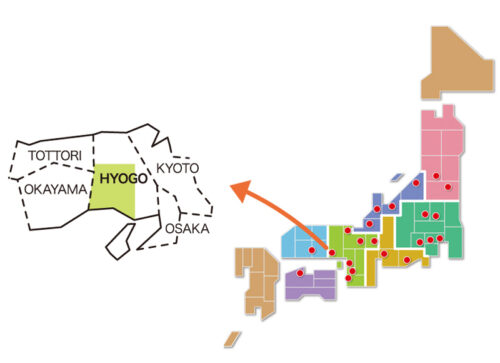Banshu Region

Yarn-dyed textile production with a wealth of water
The Banshu textile region, which made its name for woven and yarn-dyed textiles, particularly cotton, centres on the Kita-Harima area around Nishiwaki City in Hyogo Prefecture. Abundant water from three major rivers traversing the region; Kako, Sugihara and Noma, underlined how ideal this spot really is for dyeing textiles. Over two centuries of history started when weaving techniques were passed on from Nishijin in Kyoto, allowing textiles to be produced from indigo-dyed fabrics, materials for yukata (the casual, single-layered kimonos worn in summer) and further to cotton flannels. Although growth in the region soared as high-grade cotton textiles were exported after the war, things became very challenging after the Plaza Accord in 1985, which triggered continuous appreciation of the Yen. Nevertheless, the Banshu region pivoted to handle the new domestic market needs, adjusting its production system to accommodate small batches and rapid delivery of wide-ranging products. Nowadays, the Banshu region is said to contribute around 80% of all shirting fabrics produced in Japan.
Their yarn-dyed product range goes beyond shirting fabrics alone. It also includes a wider scope of varied casual wear; optimising yarn and woven structures and blending a range of compounds with creative design mastery. Recently, the focus in the region has been on boosting online sales by local textile traders, as well as factory wholesaling of original branded products like masks.
